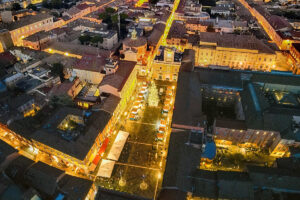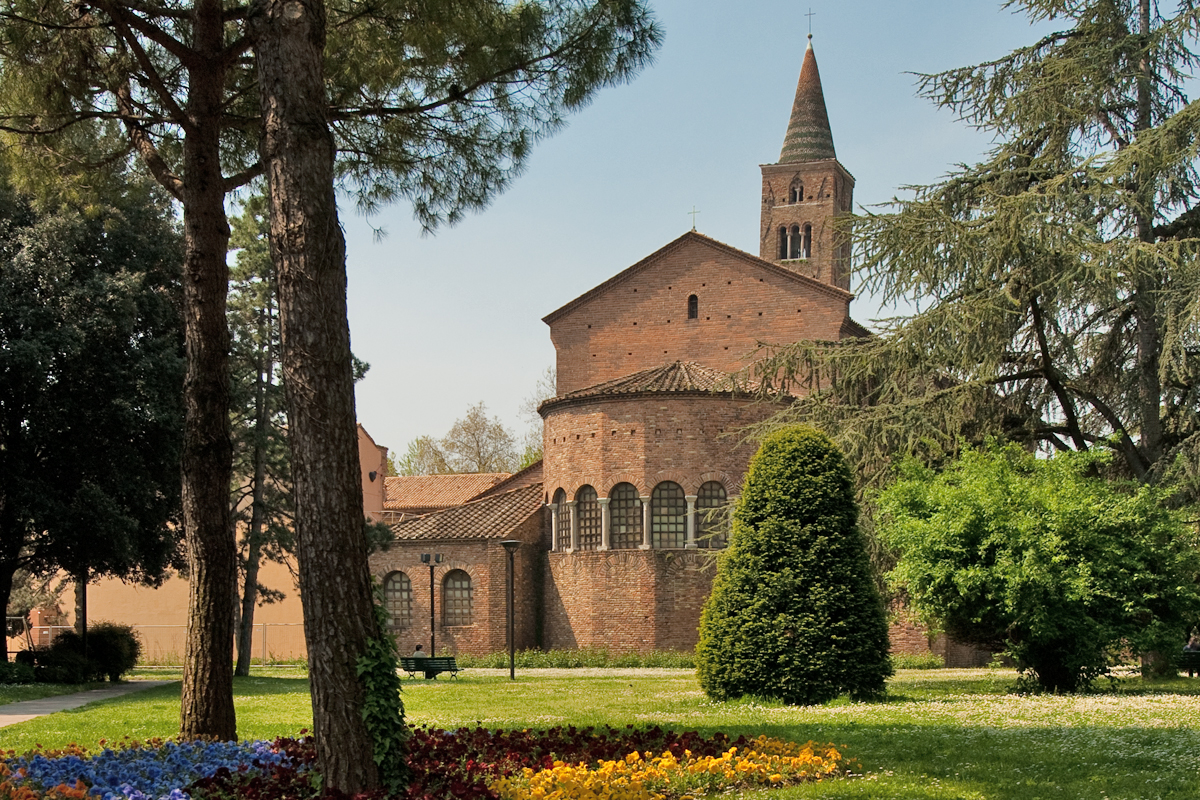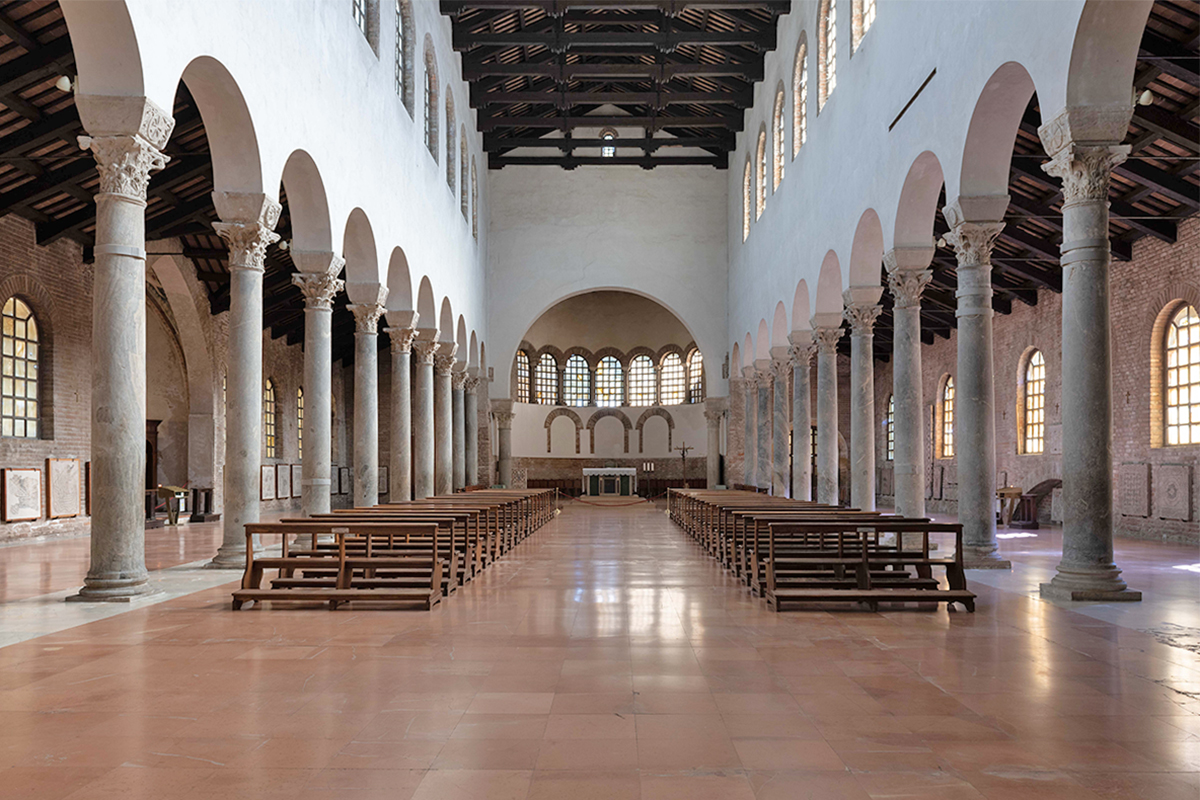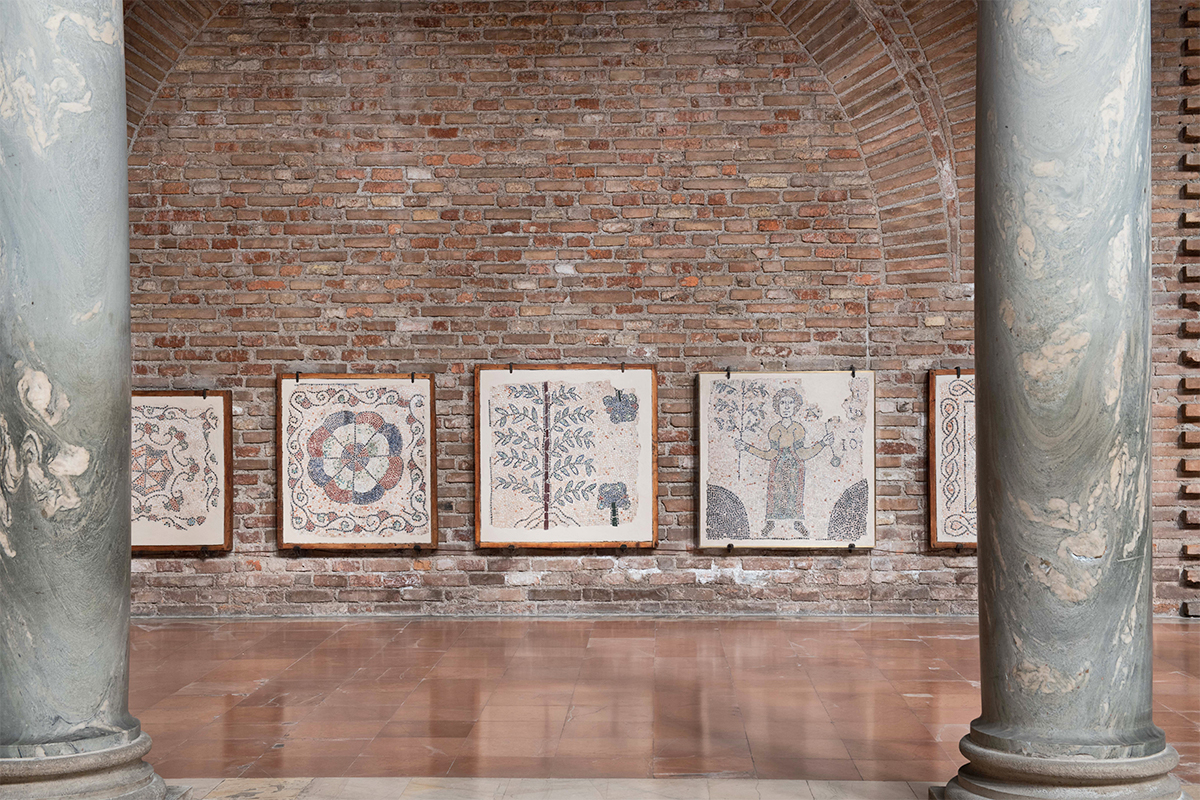As soon as you leave the railway station of Ravenna behind and go on a few meters, slightly not in line with the centre of the city, the BASILICA OF SAN GIOVANNI EVANGELISTA appears in all its beauty. It is considered to be one of the most beautiful basilicas in Ravenna.
Originally, the church, also known as the Church of the Saints Nicander and Marcian, stood by the coast, close to the sea, and was probably much higher than it it today.
As many other buildings in the city, even the basilica was subject to the so-called phenomenon of subsidence, i.e. the process that causes a gradual and progressive sinking of the ground.
The basilica was thus more striking, especially for those arriving from the sea: a true vertical break in the skyline of Ravenna.
The origins of the church through myth and legend
The basilica of San Giovanni Evangelista was built at the behest of Empress Galla Placidia after 424 AD, to keep a vow she made on her journey back from Constantinople, where she went after her brother Honorius’ death.
As she was coming back, the ship ran into a wrecking storm, and she vowed to build a religious building if she managed to survive through that storm.
Once she returned safe and sound to Ravenna, she kept her promise, as showed by the marble on the monument’s inscription: «Galla Placidia, her son Placidus Valentinianus Augustus and her daughter Justa Grata Honoria fulfilled the vows they made to be saved from the storms of the sea».
The structure of the basilica
In the Middle Ages, the entrance was preceded by a large four-sided portico, today replaced by a wall that cuts out an agreeable green area that you reach as soon as you cross a majestic 14th-century gate in Gothic style.
On the interior, the building has a typical three-nave basilica plan.
Along the walls, it is possible to admire some fragments of the ancient floor dating back to the 13th century, beautifully decorated with images of the courts of the time, depicting stories of ladies and knights, fantastic and grotesque animals, and links to the Crusades (especially in the fourth fragment).
The adjoining bell tower is original and dates back to the 10th century.
The basilica underwent various renovation and restoration works. In 1944, the basilica was extensively damaged by air raids that caused the destruction of the cycle of frescoes painted between the 12th and the 14th century as well as the mosaics of the apse.









